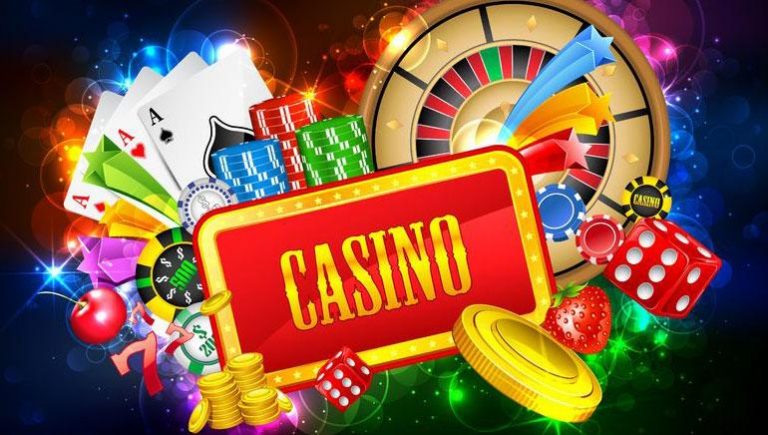Grasping Return to Player within Slot Machines
Regarding slot machines, players frequently get drawn in by the flashing lights, exciting themes, and the thrill of turning the reels. But beneath the glitz and excitement lies an essential concept that every player should understand: Return to Player, or RTP. This vital metric holds great importance in influencing the return of your wagered money over time, influencing your gaming experience and strategy as you play.
RTP is commonly stated in percentage terms and indicates the mean amount of funds returned to players compared to the total amount wagered. For instance, if a slot game has an RTP of 95 percent, it means that, on average terms, players get back $95 for every $100 they stake. Understanding this concept can help players make informed decisions when choosing which slots to play, ultimately boosting their enjoyment at the casino.
What exactly the definition of RTP?
RTP, commonly referred to as RTP, is a crucial element within slot machine games. It denotes the percentage of total bets that a particular slot machine is designed to return to players through its operation. For example, if a slot has an RTP of 95%, this means that, in theory, players can expect to get back $95 for each $100 placed over time. Understanding RTP aids players assess the likely gains of the various slots available.
RTP isn't a promise of personal wins but rather a average computed across many spins. Individual players' experience can vary significantly because of the luck inherent in the games. A greater RTP suggests superior odds for the player, making it an essential aspect to think about while selecting which slots to play. Nonetheless, despite having high RTP, there can be stretches during which players face losses, because luck plays a significant role.
It should also be noted that the slots available have different RTP percentages. Some machines may have a reduced RTP as a result of a significant entertainment or distinct elements, while others maintain a increased percentage to attract more risk-averse players. Understanding RTP enables players to make educated decisions about their play strategies and manage their bankrolls effectively while relishing the thrill of casino slots games.
How Return to Player is Being Determined
The Return to Player, or RTP, is a vital measurement in the realm pertaining to casino slots titles. It indicates the proportion of total wagered money that a gaming device is expected to return to gamblers in the long run. Understanding the method by which RTP is calculated requires insight of the dual aspects of the slot's design and its reward system. The return value is calculated via complex algorithms and data evaluation performed during the slot machine development phase. Game developers take into account various factors, including the frequency of winning combinations and the size for returns on every outcome.
In order to compute RTP, the creators simulate a large number in terms of rotations on the slot machine. Such simulations help determine how much on average, a player can expect to win based on their wagers. For example, if a machine has an RTP of 95 percent, it suggests that, in theory, among every $100 bet, gamblers can expect to receive ninety-five bucks back over time. This figure doesn't represent how much a gambler will win in a single session and over a couple of plays; instead, it reflects overall return projections.

RTP values tend to be generally released by the casino or slot creator. Gamblers should consistently seek out such data while selecting a casino slots, because it can significantly influence their gaming experience. A greater RTP typically means a better probability to recoup a portion of bets, although individual sessions can vary considerably. Understanding RTP can help gamblers to choose wisely while improve their overall enjoyment in the realm of casino slots.
Importance of RTP in Casino Games
Comprehending the Return to Player or RTP is important for any player involved in gambling on slots. RTP refers to the proportion of wagered money that a slot machine is designed to pay back to gamers over the long run. A higher Return to Player indicates that gamers can anticipate receiving a larger portion of their bets back, making it an significant factor for those seeking to maximize their play experience. Understanding this figure helps gamers make smart choices about which slots to play, as it can significantly affect their potential winnings.
Furthermore, Return to Player has a crucial role in the overall fairness and transparency of slot games. Gamers are often attracted to games with greater return rates because they provide a better opportunity of success over the long term. Gaming establishments and software creators use RTP as a marketing tool to draw in players, guaranteeing they maintain a lead in the growing gambling industry. By understanding of Return to Player, players can choose slots that match with their risk tolerance and objectives.
In conclusion, the concept of RTP encourages responsible gaming practices. https://www.inyarose.net Recognizing that not all games will provide immediate returns and that Return to Player is determined by long-term play, players can manage their anticipations and gambling behavior effectively. This knowledge enhances the enjoyment of casino slots while promoting a more balanced gaming environment. Players who comprehend the importance of RTP are more prone to have a better experience and reduce the chances of problematic gambling behavior.
